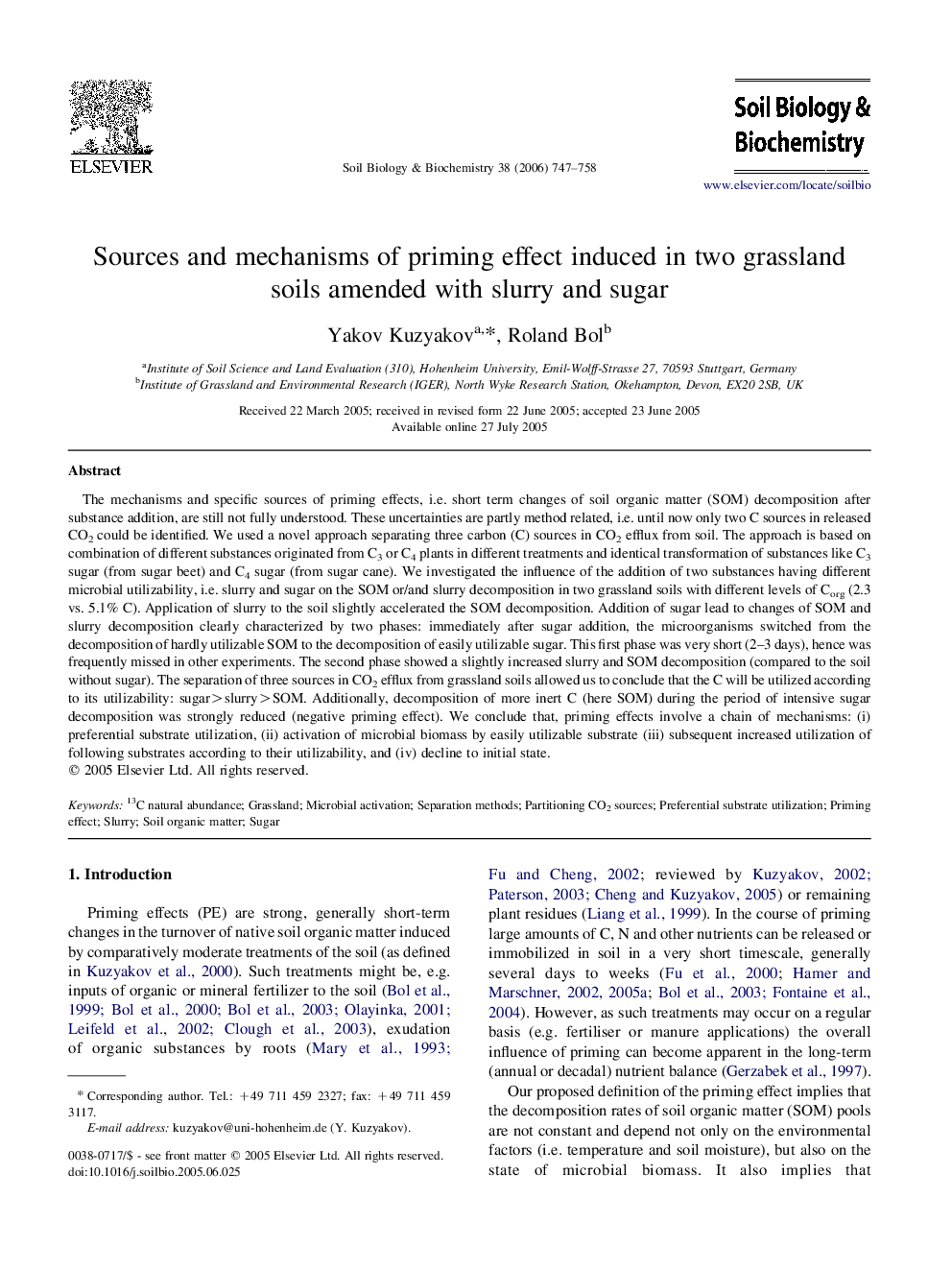| Article ID | Journal | Published Year | Pages | File Type |
|---|---|---|---|---|
| 2026622 | Soil Biology and Biochemistry | 2006 | 12 Pages |
The mechanisms and specific sources of priming effects, i.e. short term changes of soil organic matter (SOM) decomposition after substance addition, are still not fully understood. These uncertainties are partly method related, i.e. until now only two C sources in released CO2 could be identified. We used a novel approach separating three carbon (C) sources in CO2 efflux from soil. The approach is based on combination of different substances originated from C3 or C4 plants in different treatments and identical transformation of substances like C3 sugar (from sugar beet) and C4 sugar (from sugar cane). We investigated the influence of the addition of two substances having different microbial utilizability, i.e. slurry and sugar on the SOM or/and slurry decomposition in two grassland soils with different levels of Corg (2.3 vs. 5.1% C). Application of slurry to the soil slightly accelerated the SOM decomposition. Addition of sugar lead to changes of SOM and slurry decomposition clearly characterized by two phases: immediately after sugar addition, the microorganisms switched from the decomposition of hardly utilizable SOM to the decomposition of easily utilizable sugar. This first phase was very short (2–3 days), hence was frequently missed in other experiments. The second phase showed a slightly increased slurry and SOM decomposition (compared to the soil without sugar). The separation of three sources in CO2 efflux from grassland soils allowed us to conclude that the C will be utilized according to its utilizability: sugar>slurry>SOM. Additionally, decomposition of more inert C (here SOM) during the period of intensive sugar decomposition was strongly reduced (negative priming effect). We conclude that, priming effects involve a chain of mechanisms: (i) preferential substrate utilization, (ii) activation of microbial biomass by easily utilizable substrate (iii) subsequent increased utilization of following substrates according to their utilizability, and (iv) decline to initial state.
